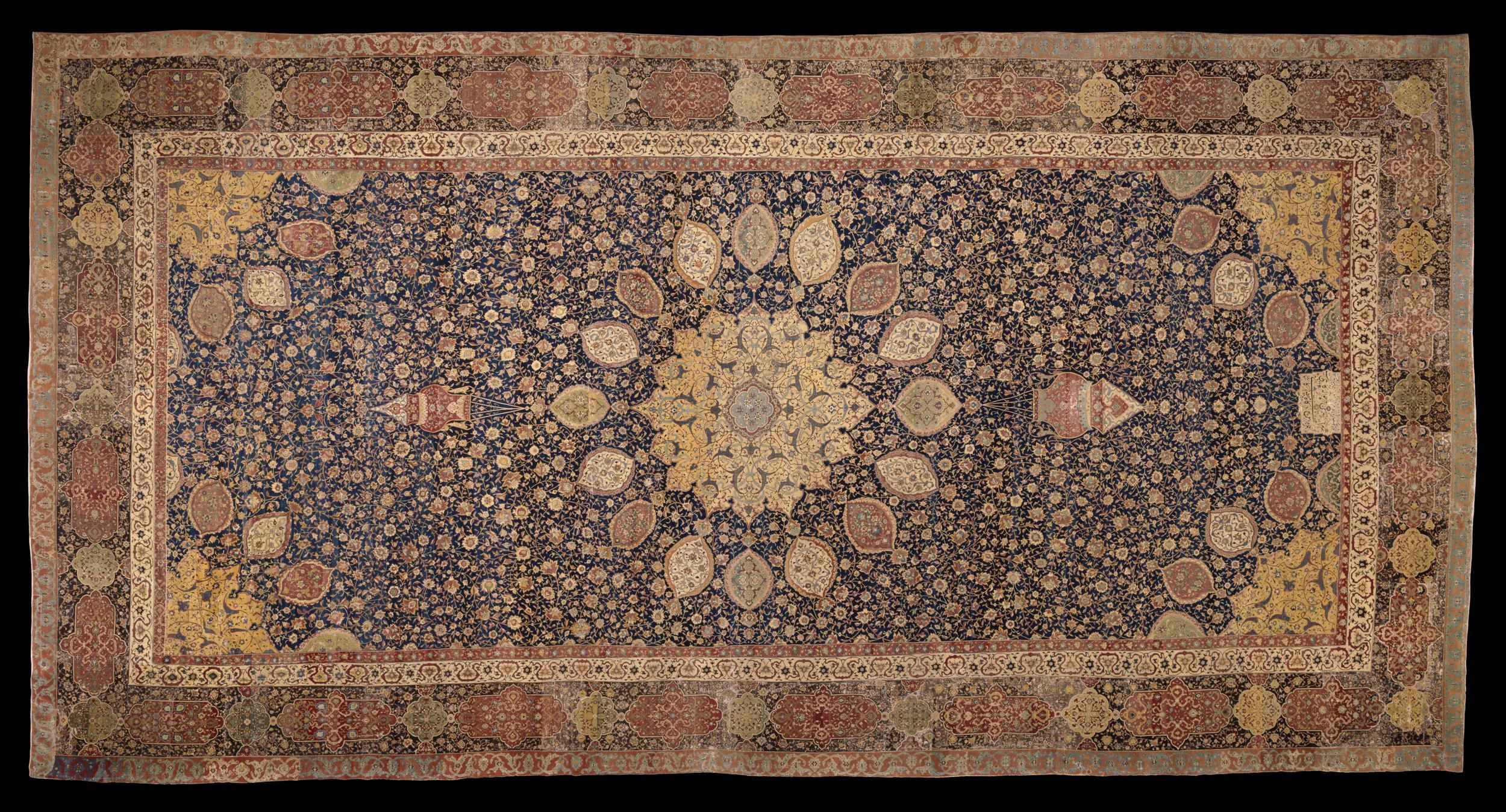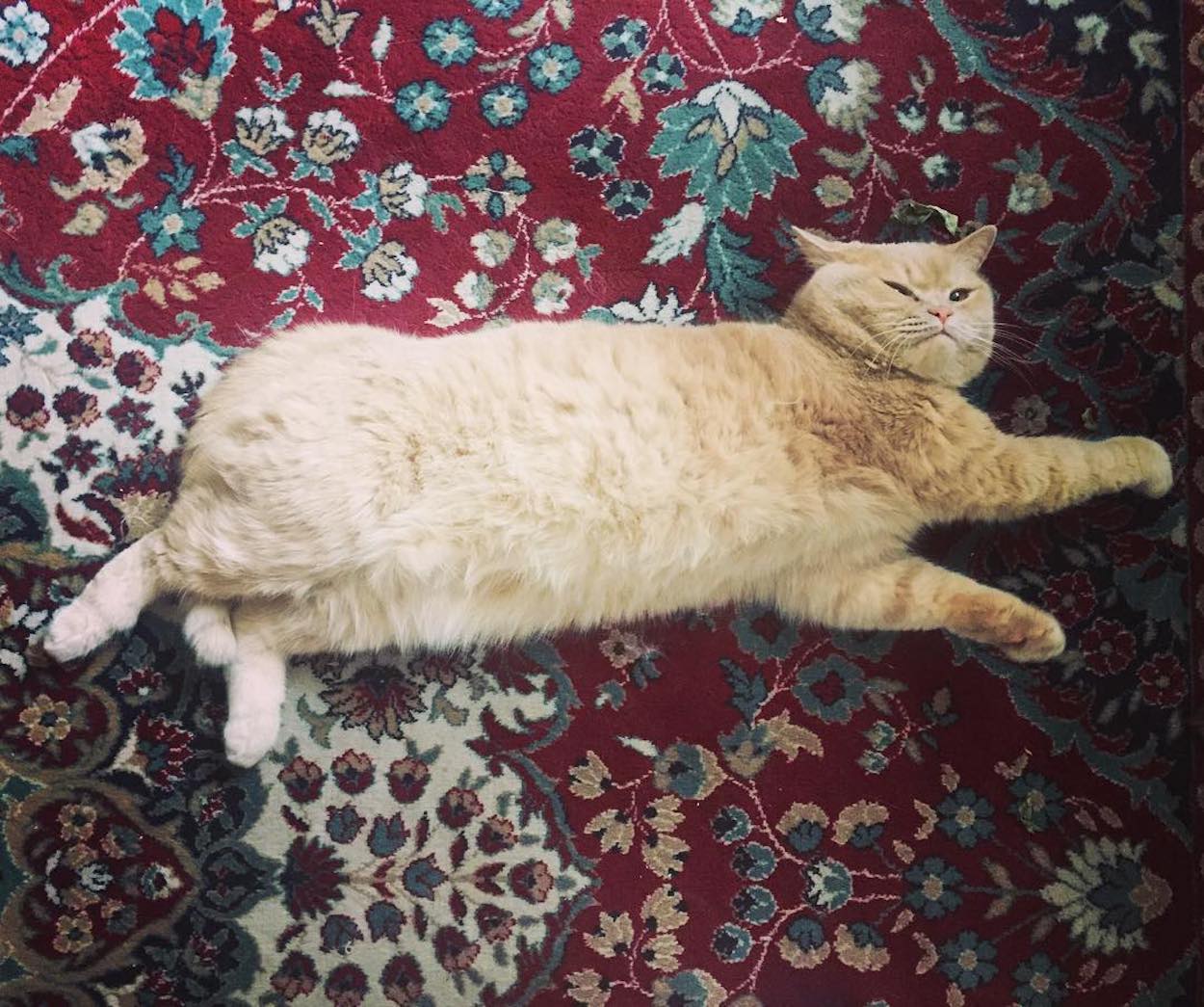This giant Iranian carpet is displayed in the middle of the Islamic Middle East Gallery in the Victoria and Albert Museum of London.
A huge floral composition covers most of its surface. The abundant plants are emphasized by the dark-blue background. The patterns on the carpet share the aesthetic of ceramic tiles in Iranian mosques.
The Ardabil Carpet is notably impressive for two key elements. It needed 26 million wool and silk knots, which accounts for an immense amount of manual work. Secondly, an inscription has been included on the right side of the pattern. It quotes a mythic Persian poetic couplet and its signature mentions the Muslim calendar’s year 946 (1539–1540 CE). The very fact that this carpet embeds such an inscription emphasizes the importance of the masterpiece.
These facts indicate it must have been commissioned by a great person for a great function. It seems that the Shah of Iran himself, Shah Tahmasp (1524–1576) was patron of weaving and commissioned this carpet for the shrine of his ancestor, who founded the Safavid Sufi order in the city of Ardabil (Iran) in 1301.
- Coraline Méric
P.S. There are so many breathtaking artifacts displayed in the V&A museum! Check out these ten most beautiful kimonos here. <3


 Unknown Artist
Unknown Artist